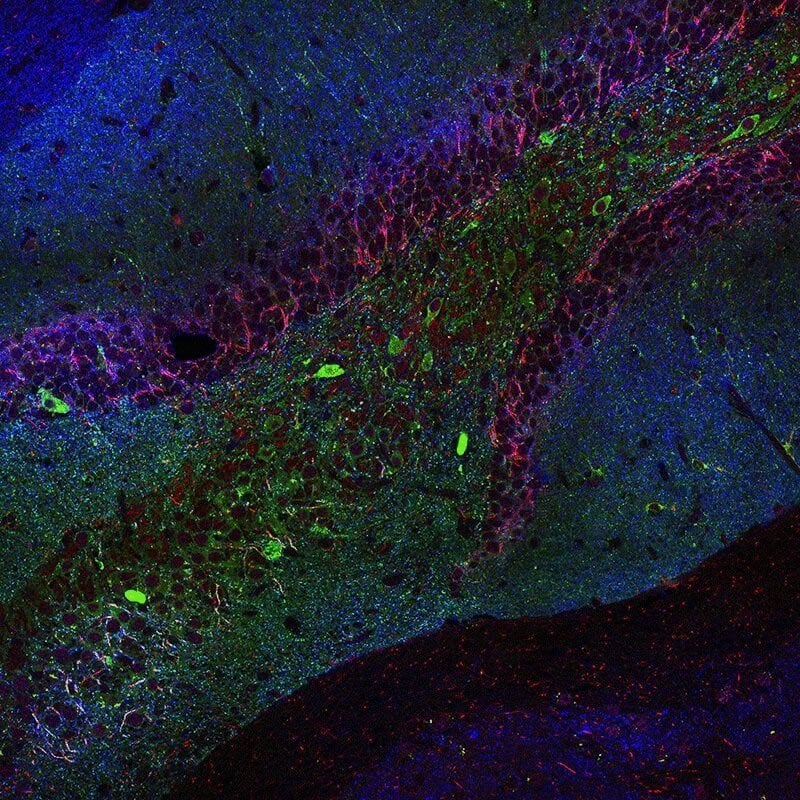Summary: GABA can selectively regulate the excitability of neurons.
Source: Florey Institute of Neuroscience and Mental Health
An international research collaboration has uncovered evidence that a common neurotransmitter can selectively regulate the excitability of neurons.
The researchers were investigating gamma-aminobutyric acid, known as GABA, the main inhibitory neurotransmitter in the human brain when the findings were made.
“We were using computer models from the Blue Brain Project which predicted that GABA could be having two different functions—increasing the excitability of one type of interneuron, and decreasing the excitability of another type of interneuron,” said Dr. Alexander Bryson from the Florey Institute of Neuroscience and Mental Health.
“This was surprising to us because GABA is primarily thought to inhibit or reduce the excitability of neurons,” said Dr. Bryson.
The researchers were subsequently able to observe the phenomenon in the laboratory. These results challenge the prevailing scientific view and suggest that sub-types of interneurons defined by their electrophysiology characteristics can undergo selective modulation by GABA.

Professor Sean Hill, co-Director at the EPFL Blue Brain Project says the results were only possible through collaboration bringing together the modelling expertise and computational infrastructure of Blue Brain, with the receptor expertise and data from the Florey Institute.
“The result was wholly counterintuitive and exciting, with significant implications for understanding brain circuit alterations in mental health disorders,” said Professor Hill.
Professor Steven Petrou, Director of the Florey Institute agrees that the finding has exciting implications.
“Understanding the human brain is one of the great challenges remaining for scientists. GABA is the predominant chemical messenger in the brain and we already knew its role changes over the course of neurodevelopment. These findings show additional complexity of this common neurotransmitter,” said Professor Petrou.
Source:
Florey Institute of Neuroscience and Mental Health
Media Contacts:
Press Office – Florey Institute of Neuroscience and Mental Health
Image Source:
The image is credited to Florey Institute of Neuroscience and Mental Health.
Original Research: Open access
“GABA-mediated tonic inhibition differentially modulates gain in functional subtypes of cortical interneurons”. Alexander Bryson et al.
PNAS doi:10.1073/pnas.1906369117.
Abstract
GABA-mediated tonic inhibition differentially modulates gain in functional subtypes of cortical interneurons
The binding of GABA (γ-aminobutyric acid) to extrasynaptic GABAA receptors generates tonic inhibition that acts as a powerful modulator of cortical network activity. Despite GABA being present throughout the extracellular space of the brain, previous work has shown that GABA may differentially modulate the excitability of neuron subtypes according to variation in chloride gradient. Here, using biophysically detailed neuron models, we predict that tonic inhibition can differentially modulate the excitability of neuron subtypes according to variation in electrophysiological properties. Surprisingly, tonic inhibition increased the responsiveness (or gain) in models with features typical for somatostatin interneurons but decreased gain in models with features typical for parvalbumin interneurons. Patch-clamp recordings from cortical interneurons supported these predictions, and further in silico analysis was then performed to seek a putative mechanism underlying gain modulation. We found that gain modulation in models was dependent upon the magnitude of tonic current generated at depolarized membrane potential—a property associated with outward rectifying GABAA receptors. Furthermore, tonic inhibition produced two biophysical changes in models of relevance to neuronal excitability: 1) enhanced action potential repolarization via increased current flow into the dendritic compartment, and 2) reduced activation of voltage-dependent potassium channels. Finally, we show theoretically that reduced potassium channel activation selectively increases gain in models possessing action potential dynamics typical for somatostatin interneurons. Potassium channels in parvalbumin-type models deactivate rapidly and are unavailable for further modulation. These findings show that GABA can differentially modulate interneuron excitability and suggest a mechanism through which this occurs in silico via differences of intrinsic electrophysiological properties.






